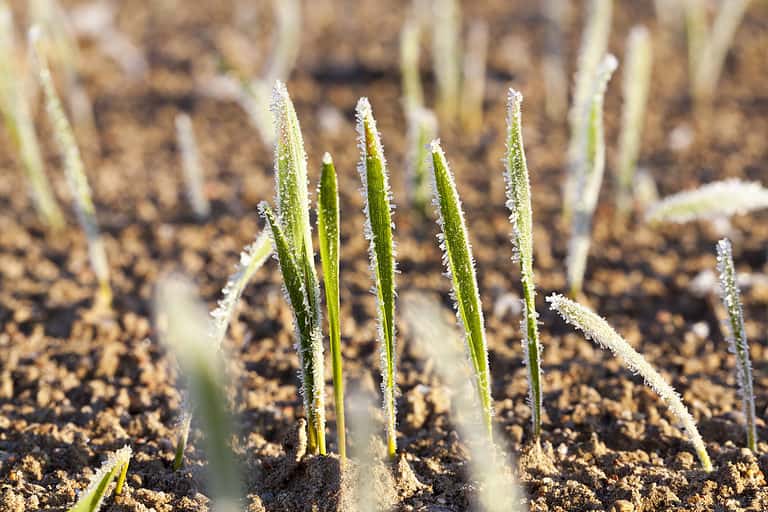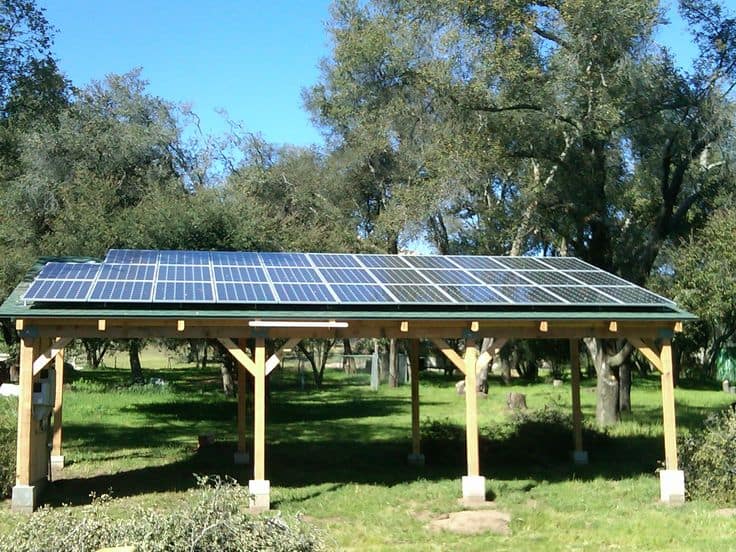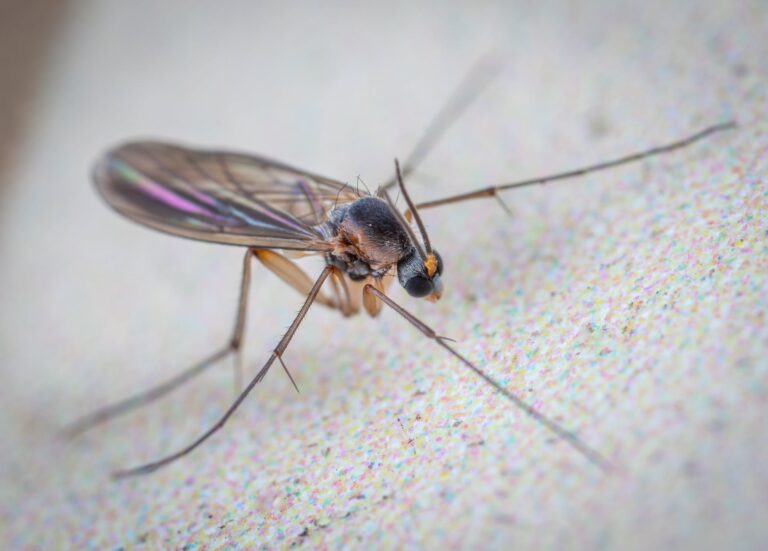7 Effective Ways to Get Rid of Groundhogs

Struggling with groundhogs damaging your garden? Discover practical ways to get rid of groundhogs for good. This guide includes natural repellents, predator scents, physical barriers, and ethical traps to help you reclaim your yard.
Key Takeaways
Groundhogs can cause significant damage to gardens and landscapes, necessitating a variety of control strategies.
Natural repellents like Epsom salt, castor oil, and hair clippings are effective and eco-friendly methods to deter groundhogs.
Implementing physical barriers, such as fencing and row covers, along with habitat modification and ethical trapping, can provide long-term prevention against groundhog invasions.
Understanding Groundhogs

Woodchucks, also known as groundhogs, are sizeable rodents ranging from 16 to 20 inches in length and weighing between 5 to 10 pounds.
As strict herbivores, their diets consist of a variety of vegetables and legumes. This dietary preference often leads them directly into gardens where they forage.
Groundhogs are notorious for causing destruction in:
lawns
flower beds
landscaping features
These areas can quickly be turned from appealing landscapes into eyesores due to the activities of these animals.
Typically staying within a radius of 50 to 150 feet around their burrows, groundhogs establish habitats near open fields or brushy regions with underground chambers serving as nesting and latrine spaces. Indications that you have groundhog visitors include chewed vegetation like tomatoes, visible entrances leading into burrow systems, and holes made by groundhogs. Along with medium-sized oval droppings.
Spotting such signs early is crucial for timely measures against garden damage.
Groundhog behavior is intriguing, during late October through early spring these creatures enter true hibernation states making strategic timing essential when looking at ways to deter them effectively. With an understanding of their habits and preferences comes better planning on how best discourage woodchucks from invading outdoor living spaces.
Natural Groundhog Repellents

Using natural remedies to repel groundhogs is both an eco-friendly and gentle method to prevent these creatures from encroaching on your garden space. By employing everyday household substances, it’s possible to create a hostile environment that deters groundhogs naturally. Among the favored options are Epsom salt, castor oil, and hair clippings—each of which has been known for its potential effectiveness against groundhog intrusions.
To ensure these natural repellents remain effective, especially following rainfall events that can wash them away or dilute their strength, they should be reapplied consistently. Pay particular attention when treating the perimeter of gardens and near burrow entrances where groundhogs commonly frequent.
Each one of these natural solutions works in its own way to help ward off unwelcome visits by groundhogs.
Epsom Salt
Utilizing Epsom salt as a homemade deterrent for groundhogs can be quite efficient. Sprinkling this substance along your garden’s edge and adjacent to the entrances of burrows forms an unattractive boundary that groundhogs tend to avoid due to its bitter flavor, which deters them from feasting on your vegetation or constructing new burrows.
To ensure the repellent remains effective, liberally distribute Epsom salt in specific zones and reapply it whenever rain or irrigation occurs. This strategy is straightforward, harmless to both flora and the environment, rendering it a superb option for safeguarding any residential garden from intrusive groundhogs.
Castor Oil
Groundhogs have a strong aversion to the scent of castor oil, making it an excellent natural deterrent. When blended with water and applied appropriately, this mixture can effectively repel groundhogs from their burrows and your garden’s boundary. The offensive smell generated by this concoction prompts groundhogs to relocate.
Consistency is key for maintaining its effectiveness. Routinely douse the area around your garden as well as the entrances to their burrows with this solution—particularly following rainfall—to deter these critters consistently. Utilizing this strategy not only aids in thwarting groundhog invasions, but also safeguards your green space while preserving environmental integrity.
Hair Clippings
Using human hair clippings is a surprisingly effective method for keeping groundhogs at bay. Groundhogs are naturally inclined to steer clear of the scent left by these clippings. By dispersing them around your garden and close to burrow entrances, you establish a boundary that the creatures would rather not cross.
The approach plays on the instinctual aversion groundhogs have towards humans, offering an easy and inexpensive form of deterrence. This strategy presents a sustainable way to reuse waste materials while safeguarding your garden from unwanted visitors.
Using Predator Scents
Utilizing the groundhogs’ instinctual fear of predators can serve as an efficient natural repellent. The presence of predator urine or similarly potent smells can give off a false sense of threat, which encourages groundhogs to abandon their burrows in pursuit of more secure habitats. By taking advantage of the heightened sensitivity of groundhog noses and their innate fear, one can effectively minimize their activity around your garden.
Placing substances with strong scents such as ammonia-soaked cloths or predator urine close to the entrances of burrows proves quite useful in deterring these animals. Two particularly effective olfactory deterrents known for keeping groundhogs at bay include cat litter and dog urine strategically positioned near burrow openings.
Cat Litter
Spreading used cat litter near burrow entrances and the vicinity of groundhog activity can mimic the presence of predators, due to its potent smell. The scent poses a threat in the minds of groundhogs, rendering their habitat undesirable.
Leveraging this natural instinctual fear of predators among groundhogs provides a non-toxic way to safeguard your garden without resorting to using a trap or harmful substances. By utilizing kitty litter—a common byproduct from households—you can deploy an environmentally conscious strategy to maintain your property’s integrity against these creatures.
Dog Urine
Spraying dog urine around the areas of your garden and the openings of burrows can create an ambiance suggestive of predator activity, which groundhogs are likely to shun. The scent signals that a possible threat, such as a dog – a natural enemy – might be nearby, compelling groundhogs to vacate promptly.
This technique is advantageous because it capitalizes on the intrinsic fear groundhogs have towards predators in order to deter them. It provides a humane and environmentally safe alternative for safeguarding your garden without having to rely on toxic substances or deadly traps.
Installing Physical Barriers

To thwart groundhogs from encroaching on your property, setting up physical deterrents is an enduring strategy. The utilization of fencing and row covers can greatly diminish the chances of these creatures infiltrating your garden space. Ensuring that such barriers are installed correctly is critical to their success in keeping tenacious groundhogs at bay.
Here’s a guide to properly placing fences and row covers as defense mechanisms for safeguarding your garden against these digging nuisances.
Fencing
To ensure that a fence is an effective deterrent against groundhogs, it needs to stand at least six feet in height to inhibit their ability to climb over it. A combination of poly fencing paired with a metal rodent guard positioned at the base can provide substantial protection from these animals. The posts supporting this fence structure should be spaced no more than five feet apart to guarantee its stability.
For added security and to thwart any digging attempts by groundhogs, overlap and burial of the fence’s bottom edge are recommended practices. Extending chicken wire horizontally along the perimeter on the surface creates an additional barrier that hinders groundhogs from creating tunnels beneath the enclosure. It’s also beneficial for the upper section of your fencing system not be firmly attached—leaving it loose will cause it to wobble if a groundhog tries climbing, which acts as another discouragement.
By implementing these defensive measures, you erect a formidable obstruction around your garden area or landscaping which successfully restricts access to destructive groundhogs thus safeguarding your vegetation from harm they could otherwise inflict.
Row Covers
Floating row covers act as a protective barrier, safeguarding plants from groundhogs without obstructing the crucial sunlight and rain they require for growth. These covers efficiently preserve crops’ health and vigor while warding off these pests.
Not only are floating row covers successful in repelling groundhogs, but they also complement an eco-friendly gardening approach. They’re a valuable component of any strategy aimed at protecting garden yields from such animals.
Motion-Activated Devices

Devices that are activated by motion can create an unsettling atmosphere for groundhogs, thus deterring them from entering your yard. By emitting sounds or noise, these tools work to scare away groundhogs and make the area less inviting for them.
To increase the efficacy of these devices, it’s beneficial to use a combination of motion-activated sprinklers and auditory deterrents. Placing motion-activated sprinklers at the boundary of your property or close to where vegetables grow will help optimize their impact as repellents. It’s essential to maintain these devices consistently so they continue functioning properly and effectively keep groundhogs at bay.
Habitat Modification
By eliminating tall grasses, weeds, and brush piles that serve as both food sources and cover for groundhogs, you can deter them. Clearing the vegetation surrounding their burrow entrances and sealing up the openings of these burrows also helps to dissuade groundhogs from occupying those spaces.
Introducing scents such as dog urine or human hair clippings around potential habitat areas can create an environment hostile to groundhogs. The goal of modifying habitats in this way is to deplete available food sources and hiding places, rendering your yard uninviting to these creatures.
Ethical Trapping and Relocation

Utilizing humane methods for trapping and relocating groundhogs is considered ethical management of these animals. When live trapping, one can opt to release the animal in the same location or relocate it based on what is permitted by local regulations. To maintain humaneness, any trap set for a groundhog should clearly display the trapper’s contact information and be inspected at regular intervals not exceeding 24 hours.
In certain areas, moving groundhogs to new locations without official permission may contravene laws designed to protect local ecosystems. Obtaining landowner permits is mandatory for both capturing and transferring groundhogs to different habitats. In jurisdictions that do permit relocation, there’s an advice that relocated groundhogs are taken a distance no less than ten miles away with the aim of discouraging them from finding their way back.
Adhering meticulously to such protocols ensures both effective and conscientious removal practices concerning groundhogs while safeguarding these creatures as well as their natural surroundings from unintended consequences.
Prevention Strategies
To forestall future issues with groundhogs, prioritizing prevention measures is essential. Ensuring the cleanliness of areas and eliminating potential food sources makes it less attractive for groundhogs to encroach upon your space. Regular garden and lawn inspections accompanied by proper upkeep can thwart early signs of a groundhog presence.
Employing physical deterrents such as fences and row covers plays an important role in safeguarding gardens from invading groundhogs. Through the adoption of these proactive strategies, you will be better equipped to protect your property from any destruction caused by groundhogs.
Summary
In conclusion, dealing with groundhogs requires a combination of strategies to be effective. From natural repellents like Epsom salt, castor oil, and hair clippings to using predator scents and installing physical barriers, there are numerous ways to protect your property. Motion-activated devices and habitat modification can also play a significant role in keeping groundhogs at bay. Ethical trapping and relocation offer a humane way to remove groundhogs, while prevention strategies help ensure they don’t return.
By taking proactive measures and employing these techniques, you can safeguard your garden and enjoy a groundhog-free environment. Remember, the key to success is consistency and persistence. Stay vigilant, and you’ll be able to keep these pesky rodents at bay.
Frequently Asked Questions
** What are the signs of groundhog activity? **?
If you observe damaged vegetables, unmistakable burrow entrances, and distinctive droppings, it is a strong indication that groundhogs are active in the vicinity.
** How often should I reapply natural repellents? **?
You should reapply natural repellents periodically, particularly after exposure to rain or heavy sweating, to ensure effective protection.
** Can I use motion-activated devices for other pests? **?
Certainly, devices activated by motion have the capability to discourage a range of nuisances effectively. Maintaining them consistently is crucial to ensure they operate at their best.
** Is it legal to relocate groundhogs? **?
It is essential to verify the local regulations on groundhog relocation since obtaining permits might be mandatory in certain regions.
Non-compliance with these rules could result in legal complications.
** What physical barriers are most effective? **?
Row covers and fencing stand out as the top physical deterrents when it comes to safeguarding your plants. These barriers offer robust protection from various pests, as well as shield against different environmental elements.





